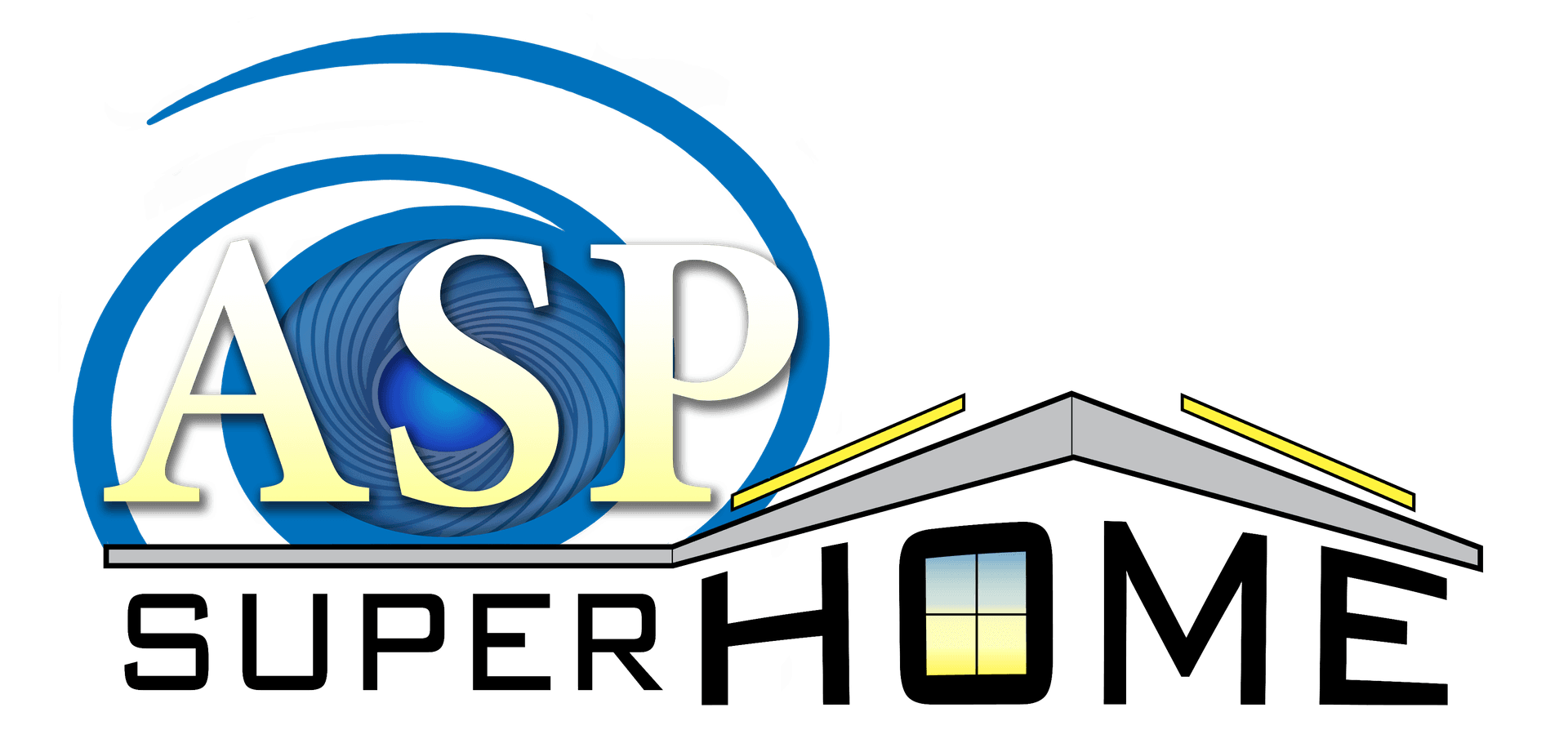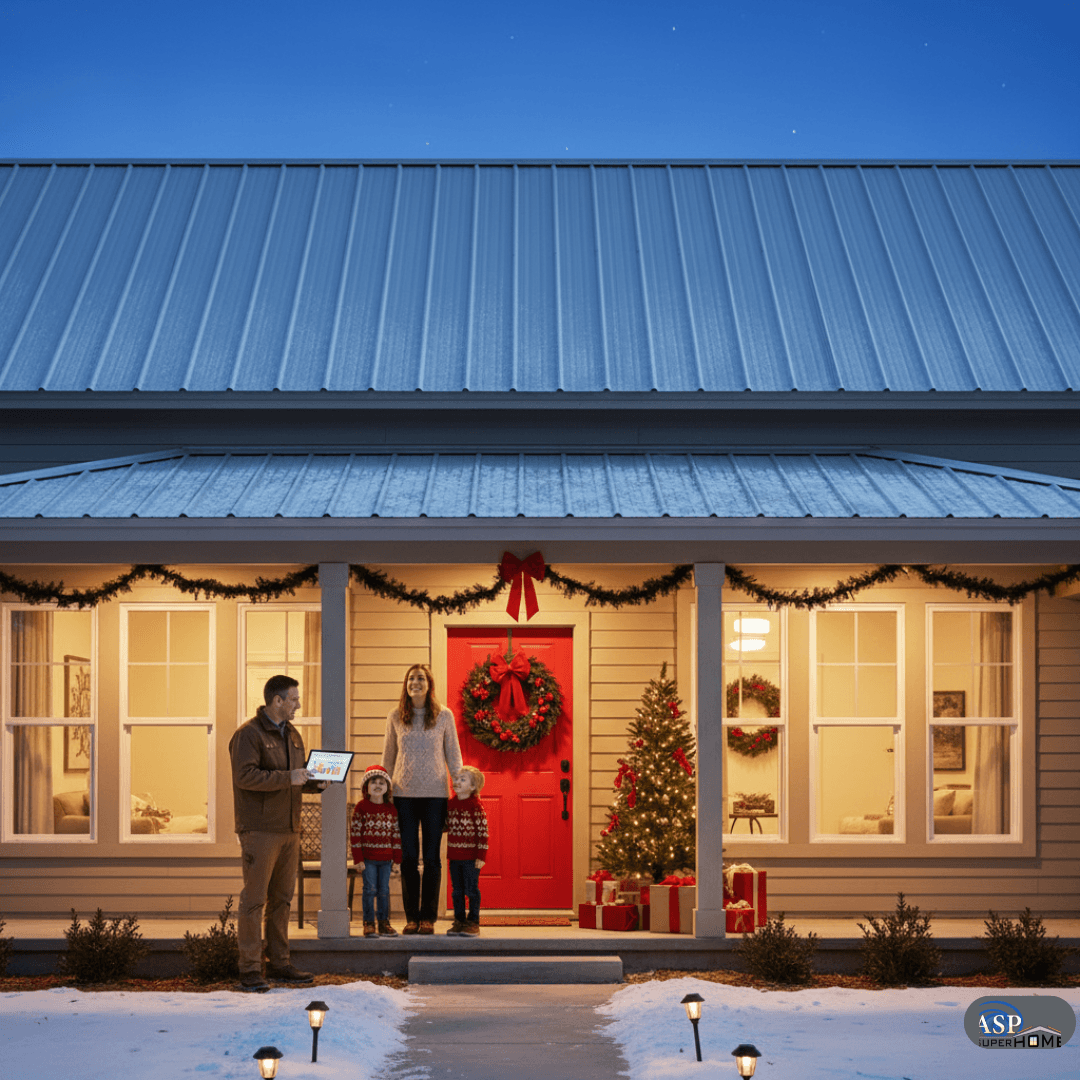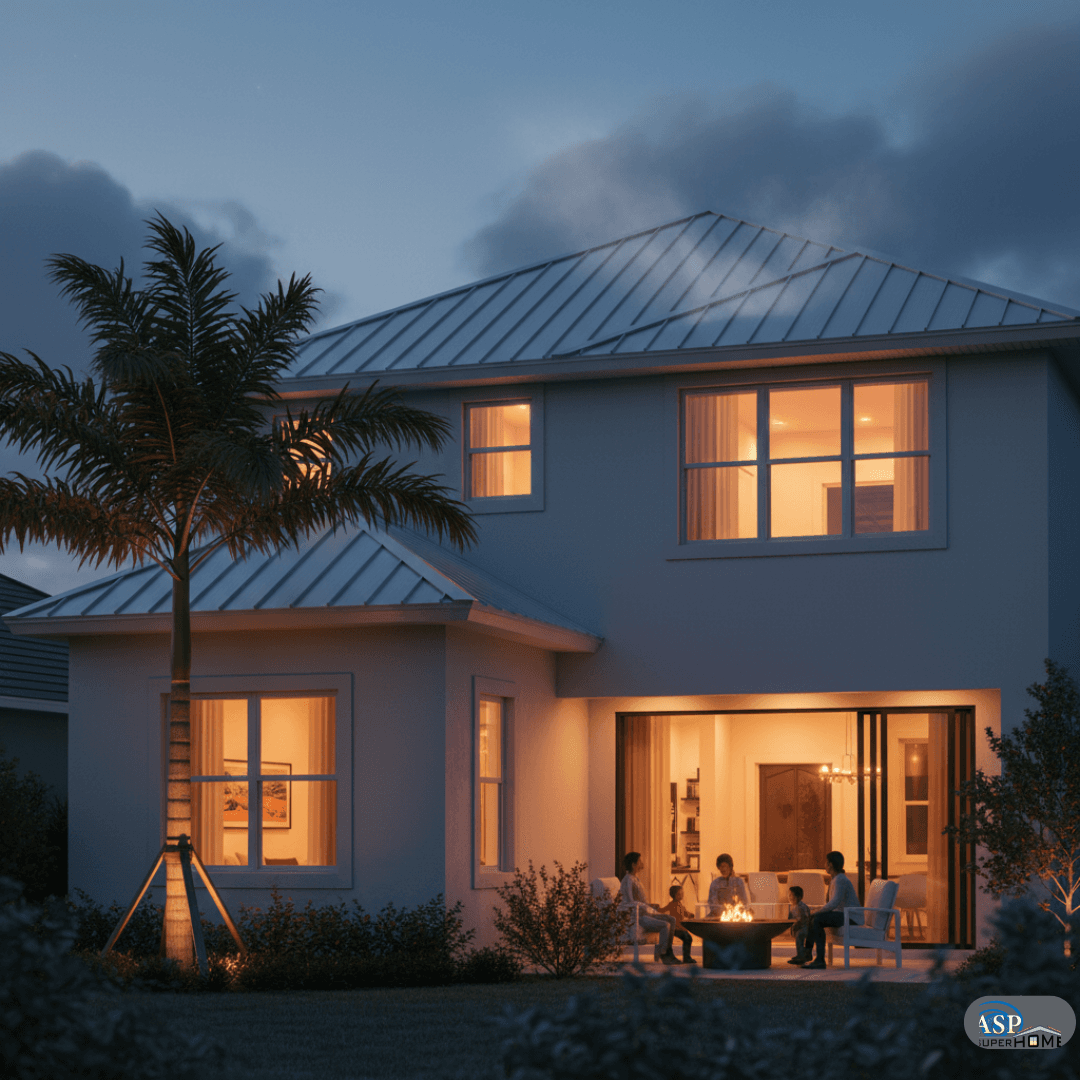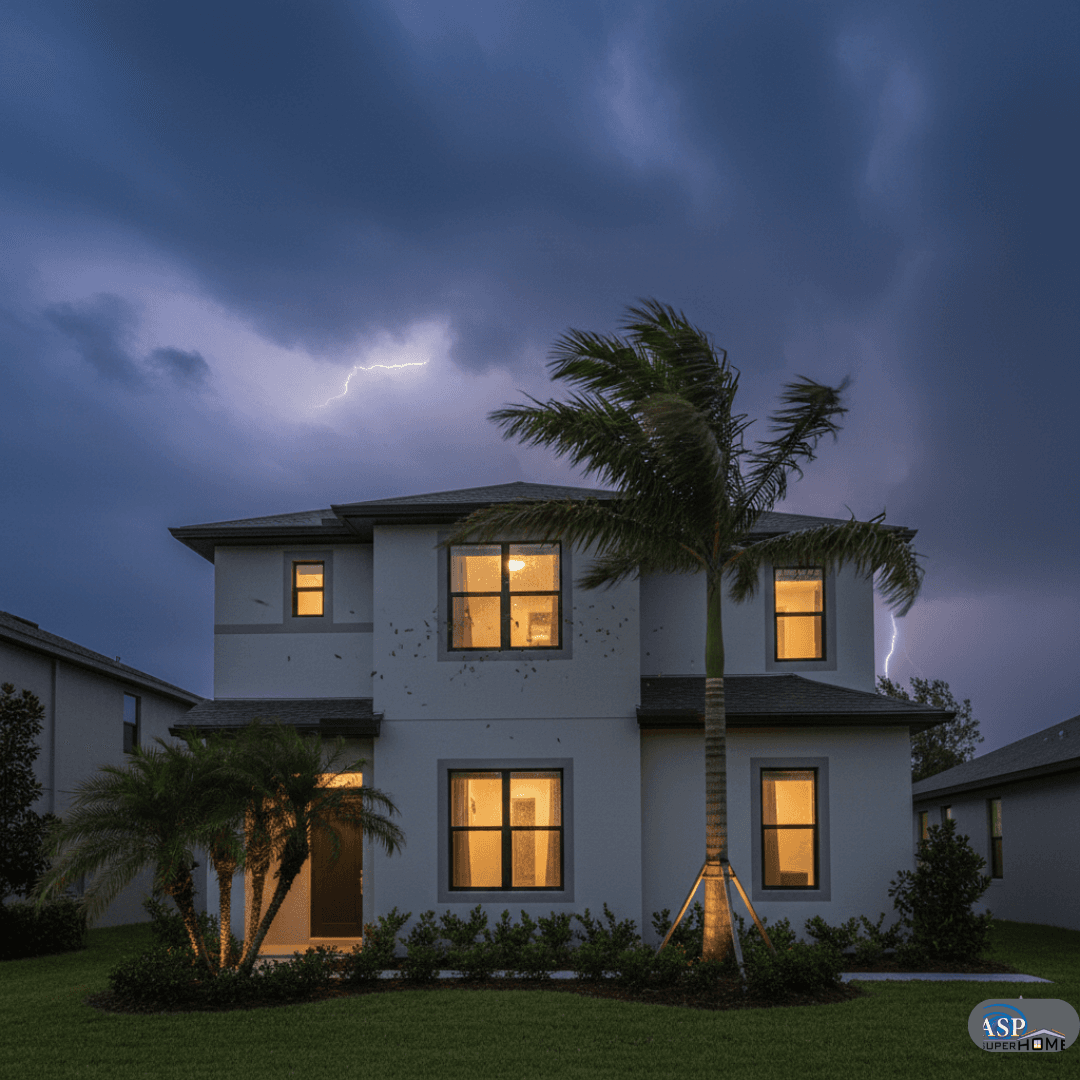When the Grid Fails Your SuperHome Doesn’t: Stay Powered
You know that feeling, right? The lights flicker, then die, leading to an uncomfortable silence. Suddenly, your whole world shrinks to what’s immediately around you. It’s unsettling, and for many, a power outage means frustration and worry.
But what if it didn’t have to be that way? Imagine this: the neighborhood goes dark, but your home stays bright. That’s the reality When the Grid Fails Your SuperHome Doesn’t.
It’s a completely different experience, one where peace of mind continues even when the public power supply stops. Because When the Grid Fails Your SuperHome Doesn’t, your daily life carries on with surprising normalcy, even during widespread grid failures.
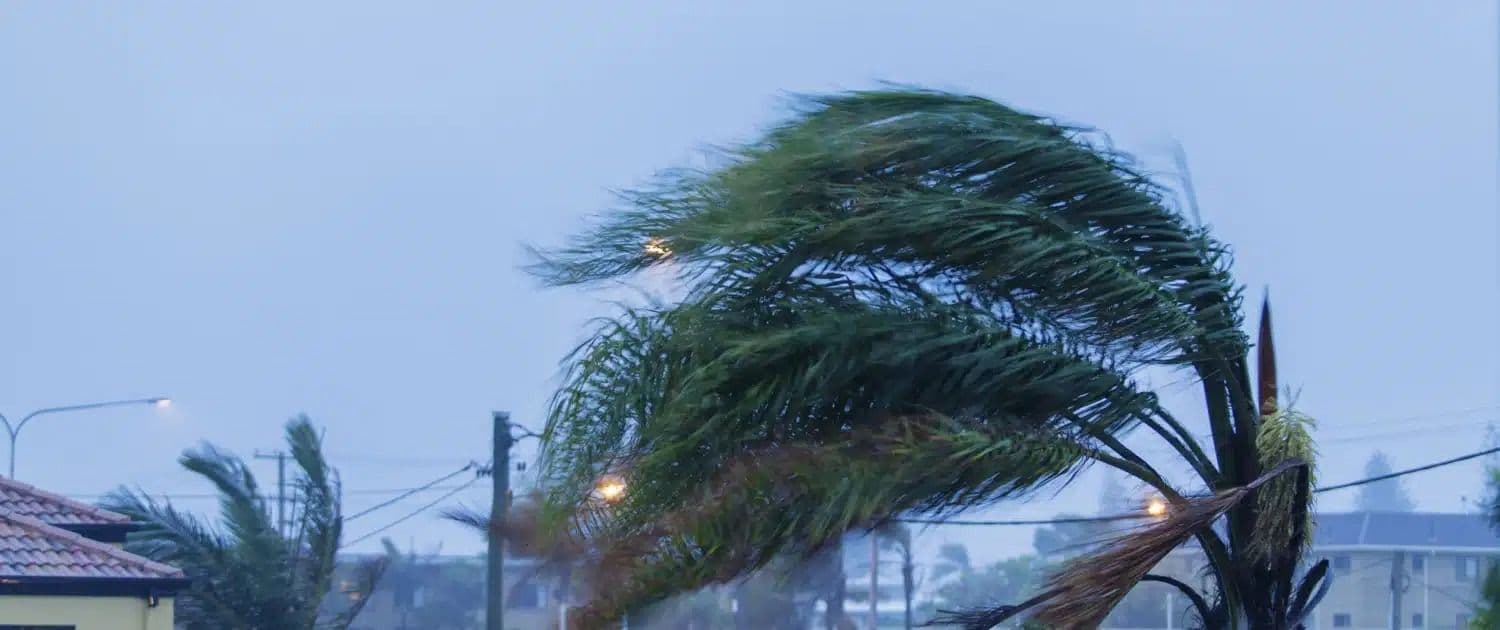
Table Of Contents:
- Understanding Grid Vulnerability
- What Makes a SuperHome Super During an Outage?
- Essential Supplies for a Power Outage
- When the Grid Fails Your SuperHome Doesn’t: Real-Life Scenarios
- Planning Your Path to a Resilient SuperHome
- More Than Just Convenience: The Bigger Picture
- Conclusion
Understanding Grid Vulnerability
Why does the power go out anyway? It can feel random sometimes, but there are common reasons for a power grid failure. Severe weather is a significant culprit; think ice storms, hurricanes, or an intense heat wave stressing the power systems and causing equipment failures.
Our power grid itself is an incredibly large and, in many places, old system. The U.S. Department of Energy highlights that aging infrastructure plays a substantial role in its reliability. This means that grid fails are an unfortunate reality we must prepare for, and the latest news often reports on increasing vulnerabilities.
Sometimes, it’s simply a matter of too much demand from the electric utility customers, especially when everyone cranks up the AC on a scorching day, and the system can get overloaded. Physical damage, like a tree falling on lines or even a clumsy squirrel meeting a transformer, also causes outages. The point is, these grid events aren’t going away and may happen more frequently.
What’s the big deal if the power blips off for a bit? For a typical home, a power failure can mean a lot of problems. Instantly, you’re in the dark, which is a safety issue, especially if you can’t find your LED headlamps. If it’s cold, your heating system might rely on electricity. In summer, no AC is miserable, and keeping cell phones charged becomes a challenge.
Your refrigerated food starts a countdown to spoiling, potentially wasting hundreds of dollars in groceries. And what about communication? Your Wi-Fi router needs power, impacting your ability to get updates or work from home. It’s a chain reaction of inconveniences and real concerns during these power grid failures.
What Makes a SuperHome Super During an Outage?
So, what’s different about a SuperHome? It’s not just about cool gadgets; it’s about being thoroughly prepared. A SuperHome is built with resilience in mind from the ground up. It anticipates problems like power outages and has solutions already in place, ensuring your home’s basic functions continue.
This readiness changes everything when the streetlights are out, but yours are on. It’s about maintaining a sense of normalcy and security, no matter what’s happening with the broader power grids. This preparation is a good idea for any homeowner concerned about reliability.
Backup Power Solutions: The Heart of Resilience
This is where the real advantage of a SuperHome is clear, especially during a prolonged power outage. Having your own power source, effectively your personal power plant, is central to a SuperHome’s independence from the grid power. You’ve got a few solid backup power systems to consider.
Standby generators are a popular choice. These are permanently installed outside your home, similar to an AC unit, and they monitor grid power constantly. When they detect an outage, they automatically start up, often running on natural gas or portable propane, so a fuel supply is necessary.
Portable generators offer another path, usually less expensive upfront. However, you must manually set them up, fuel them (often with gasoline or portable propane), and run extension cords. They’re great for powering essentials but less convenient than a standby system; plus, safe operation is critical to avoid carbon monoxide poisoning, so never run them indoors or in attached garages.
Then there’s battery backup through energy storage. This is becoming a very popular solution, especially when combined with solar panels. Home batteries, such as the Tesla Powerwall or other solar battery options, can store electricity efficiently. If you have solar panels providing, for example, 5 kw solar or 10 kw solar energy, they can store excess solar power generated during the day for later use. This stored energy is then available when the power grid fails.
When the grid goes down, the backup battery kicks in almost instantly. Even without solar, you can charge a home battery from the grid when it’s up, making it ready for a power failure. Some systems are made to integrate with solar and a generator for multiple layers of backup, offering significant battery capacity.
Combining these can give great flexibility. Perhaps you use solar panels and batteries for daily optimization and short outages. A generator then backs up the batteries for very long outages or extended periods of cloudy weather.
Energy Efficiency: Using Less to Last Longer
Backup power is fantastic, but it has limits, whether running on a generator or batteries, as fuel and stored energy are finite. This is where energy efficiency becomes a SuperHome superpower. If your home uses less energy, your backup power lasts much, much longer, helping you save energy and resources.
Think about insulation. A well-insulated home, as advocated by programs like Energy Star, holds its temperature effectively. In winter, it keeps the heat in; in summer, it keeps the heat out. This means your heating and cooling systems don’t have to work as hard or as often, which is a huge energy saver.
High-performance windows and doors are part of this too. Old, drafty windows can suck the warmth right out of your house, increasing energy demand. Modern windows with good seals and low-E coatings make a big difference. Efficient appliances and LED lighting also cut down your daily energy hunger, and every little bit helps your backup supply stretch further during grid events.
Water Independence: An Added Layer
Power outages can sometimes affect municipal water supplies because pumping stations need electricity. What if you didn’t have to worry about that? Some SuperHomes incorporate water independence, ensuring access to drinking water.
Rainwater harvesting systems collect and store rainwater, which can be used for irrigation or, with proper filtration, for household use, including clean drinking water. It’s an ancient idea making a modern comeback, helping to make your water clean and accessible. The EPA has resources on rainwater harvesting, discussing its benefits for self-sufficiency.
If you have a well, you’re already part way there, but your well pump needs electricity. Connecting your well pump to your backup power system means you still have running water when the grid is down. This can be a huge comfort and practical benefit, especially during longer outages when access to clean drinking water is a key survival need.
Smart Home Controls for Outage Management
Okay, so your backup power is on. Great. But how do you manage it best? Smart home technology in a SuperHome can really shine here, especially for tasks like EV charging management. These systems can monitor your energy production (if you have solar) and your consumption, showing exactly how much power you’re using. They can also show how much capacity your batteries or generator have left, and help keep cell phones charged by prioritizing power to essential outlets.
This information lets you make smart choices. Maybe you decide to turn off less critical circuits to save power. Some advanced systems can even do this automatically, prioritizing essential loads like your refrigerator, medical devices, or basic lighting. They might temporarily disable high-draw appliances like an electric dryer or delay EV charging until solar production is high or demand is low, significantly extending your backup power duration.
Essential Supplies for a Power Outage
Beyond technological solutions, being prepared with essential supplies is crucial for weathering any power outage. Don’t wait until a power failure is imminent to gather these items. Having a well-stocked emergency kit can make a significant difference in your comfort and safety during extended periods without power.
Your kit should include sources of light, such as LED headlamps and flashlights with extra batteries. Communication is also vital, so ensure you have a battery-powered or hand-crank radio to receive the latest news and updates from emergency services. Keeping cell phones charged is important, so have portable power banks ready.
Access to clean drinking water is paramount; store at least one gallon of water per person per day for several days. Non-perishable water food items that don’t require cooking are also a good idea. Don’t forget an aid kit stocked with over-the-counter medications, prescription medications, hygiene products, and any specific items your family might need. The Red Cross offers comprehensive checklists for emergency preparedness kits, which are invaluable for any survival situation.
Other useful items include:
- Manual can opener.
- Multi-purpose tool.
- Personal hygiene products and sanitation supplies.
- Copies of important documents in a waterproof bag.
- Cash, as ATMs and credit card machines may not work.
- Warm blankets or sleeping bags, especially for colder climates.
- A plan for any pets, including food and water.
Store these supplies in an accessible location known to all family members. Regularly check expiration dates on food, water, and medications, replenishing as needed. This preparation makes any prolonged power event more manageable.
When the Grid Fails Your SuperHome Doesn’t: Real-Life Scenarios
It’s one thing to talk about technology; it’s another to see how it performs in a real survival situation. Let’s imagine a few scenarios where a power grid fails. These illustrate how a SuperHome keeps life going smoothly, maintaining basic functions when others struggle.
Imagine a fierce winter storm rolls through. Ice coats the trees, and power lines snap under the weight. The power grid is down for three, maybe four days – a prolonged power outage. Your neighbors are bundled in blankets, eating cold food, and their pipes are in danger of freezing. But in your SuperHome? The generator or batteries, perhaps a robust solar battery system, kicked in seamlessly. Your heat is on, you have lights, and you can cook warm meals, providing comfort during extreme weather. Your family is safe and comfortable; you’re not just surviving, you’re living normally.
Or picture a blistering summer heat wave. The grid is strained to its breaking point due to high demand. Utility companies announce rolling blackouts to prevent a total collapse of the power grids. Your area is scheduled to lose power for several hours each afternoon. For others, this means sweltering indoor temperatures and worries about spoiled food. But your SuperHome? It might automatically switch to battery power, utilizing stored energy during those times. Your AC keeps humming, maybe at a slightly higher thermostat setting to conserve energy, and your refrigerator stays cold. You can continue working from home if needed, cool and collected, while others face disruption.
Sometimes, it’s not a widespread disaster but localized equipment failures. A transformer down the street blows. It’s a localized outage, but it could still last for hours. In a typical home, it’s sudden darkness and an abrupt halt to whatever you were doing. In your SuperHome, the switch to backup power is so fast you might only notice a brief flicker of the lights, if that. You might get an alert on your phone from your smart system, but otherwise, life just carries on. That kind of seamless transition provides amazing peace of mind, especially if there’s concern about a potential terrorist attack on infrastructure or an electromagnetic pulse, though an EMP requires specialized hardening beyond standard backup power systems.
Planning Your Path to a Resilient SuperHome
This sounds great, you might be thinking. But how do you actually get there? Building a truly resilient SuperHome involves some planning and investment. It’s not just about buying a gadget; it’s about creating integrated backup power systems that work for your specific needs, so don’t wait until the next power grid failure to start.
Assessing Your Needs and Risks
First, take a look at your situation. How often do power outages really happen where you live? Are they usually short, or do they sometimes last for days, becoming a prolonged power event? Knowing your local risk, including vulnerability to extreme weather, helps determine how robust your backup system needs to be. The Ready.gov site, often referencing Red Cross guidelines, gives advice on preparing for outages.
Then, think about what’s absolutely essential for you during an outage. Do you have medical devices that need constant power? Does someone in your household work from home and need internet and computer access to maintain services? Are young children or elderly relatives part of your family, needing extra comfort and safety? List out your non-negotiables to help decide what circuits need backup and the necessary battery capacity or generator size. An innovation project within your own home could be to identify these critical needs methodically.
Budget is, of course, a factor. Backup power systems and energy upgrades are investments. Understanding your priorities helps you allocate your budget effectively. You don’t have to do everything at once; sometimes a phased approach is best.
Phased Approach vs. All-in-One
You can approach building your SuperHome resilience in stages. Maybe you start with a portable generator, perhaps a portable propane model, for essential loads. That’s a good first step. Later, you could upgrade to a whole-house standby generator or a home battery system with solar panels, specifying the kw solar array size you need. Perhaps you focus on energy efficiency upgrades first; new insulation, better windows, or a more efficient HVAC system will save you money on energy bills right away and make any future backup system more effective.
Or, you might decide to go for a more comprehensive solution from the start. This is often the case if you’re building a new home or doing a major renovation. Integrating these systems from the ground up can sometimes be more cost-effective. There’s no single right answer, just the right answer for you, considering your exposure to grid events.
Working with Professionals
Unless you’re a skilled electrician with experience in these systems, this isn’t typically a DIY project. Installing generators, battery systems like a Tesla Powerwall, and tying them into your home’s electrical panel requires expertise. You’ll need qualified electricians; make sure they are licensed and insured, and ask for references. Good customer service from your installer is important throughout the process.
An energy auditor can help you identify the best energy efficiency upgrades for your home. Smart home integrators can help you set up advanced control systems. And don’t forget permits and code compliance; proper installation is critical for safety and for your system to work correctly when a power failure occurs. Reputable professionals will handle the permitting process and make sure everything is up to local codes before power restored signals the end of their primary work.
More Than Just Convenience: The Bigger Picture
Having a home that functions smoothly during a power outage is incredibly convenient. But the benefits of a SuperHome go beyond that, offering more than just avoiding the dark. There’s a larger value proposition here. Homes with robust backup power and energy efficiency features are attractive to buyers, which can increase your property value. Think about the appeal of a house that offers uninterrupted comfort and security, especially as concerns about power grid failures grow.
Safety and security are significantly boosted. You’re not fumbling in the dark with LED headlamps as your only light. Your security system can remain operational. You have reliable communication if your phone lines are down but you have internet via satellite with battery backup. This protection is invaluable, especially if you have vulnerable family members or need to contact emergency services.
If your SuperHome includes renewable energy sources like solar panels paired with battery storage, you’re also contributing to a more stable energy future with clean energy. You’re reducing your reliance on the central grid. You are potentially using cleaner energy. This kind of decentralized power generation can, on a larger scale, help make the entire grid more robust, which is good news for everyone. This proactive step helps maintain critical services during widespread outages.
But perhaps the most significant benefit is intangible: the peace of mind. Knowing that you and your family are prepared. Knowing that you can weather the storm, literally. That feeling of self-reliance and security is something many homeowners strive for, and a SuperHome helps deliver exactly that, transforming a potential survival situation into a manageable inconvenience.
Conclusion
Power outages are an inconvenient truth of modern life. They can be disruptive and stressful, highlighting the vulnerability of our power grid. But they don’t have to leave you powerless or disrupt all basic functions of your household.
With thoughtful planning and the right systems, your home can become a haven of stability. When the Grid Fails Your SuperHome Doesn’t just endure the outage; it often continues as if nothing happened. You get to keep your lights on, your food fresh, and your family comfortable, even during extended periods without grid power.
This is about making a smart investment in your home’s resilience, your family’s well-being, and your peace of mind. Preparing for when the power grid fails means your SuperHome won’t leave you in the dark. It’s a good idea to explore these options and don’t wait for the next power failure to consider how you can be better prepared.
FeatureStandby GeneratorPortable GeneratorBattery Backup (e.g., Tesla Powerwall)ActivationAutomaticManualAutomatic (often seamless)Fuel SourceNatural Gas, PropaneGasoline, PropaneGrid, Solar PanelsConvenienceHighLow to MediumVery HighUpfront CostHighLow to MediumMedium to HighIntegrationWhole-houseSelected appliances via cordsWhole-house or essential circuitsNoise LevelMediumHighVery LowCarbon Monoxide RiskLow (external placement)High (requires careful outdoor placement)None
